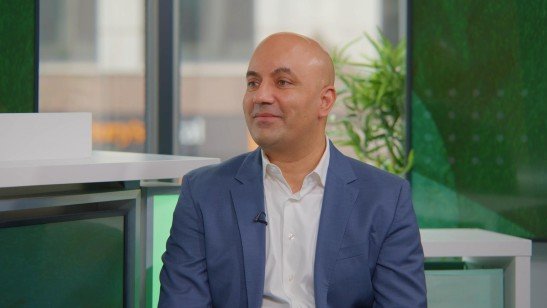What if your investments could build a better world while still earning strong returns? This powerful question drives the work of the Global Impact Investing Network and its co-founder.
The impact investing network began in 2009. It grew from a landmark report called “Investing for Social and Environmental Impact.” Today, this organization connects nearly 4,000 groups worldwide.
These groups manage over $1.5 trillion in assets dedicated to positive change. This massive growth shows how global impact investing has moved from niche idea to mainstream strategy.
The leader behind this movement brings impressive credentials. He holds degrees from Kellogg and Harvard Kennedy School. His career includes work at Bain & Company, Gap Inc., and Johnson & Johnson.
His personal motivation comes from his family in Brooklyn. He wants to create a more sustainable and equitable future for all. This vision now reaches millions through major media outlets and speaking events.
Key Takeaways
- The Global Impact Investing Network leads the worldwide impact investing movement
- Nearly 4,000 organizations now participate in this growing field
- Over $1.5 trillion in assets are managed for social and environmental impact
- The network began from influential research published in 2009
- Impact investing combines financial returns with positive social change
- Leadership comes from professionals with top business and policy backgrounds
- This approach represents the future of responsible capitalism
An Introduction to Amit Bouri and the Global Impact Investing Network
Imagine a financial system where every dollar creates positive change. This vision drives the organization’s core mission and global activities.
The network’s growth reflects a fundamental shift in how capital gets deployed worldwide.
From Co-Founder to CEO: Bouri’s Journey in Impact Investing
The organization’s chief executive officer helped launch this initiative in 2009. His background in both business and policy shaped his unique perspective.
He recognized early that impact investing needed strong infrastructure to succeed. This insight drove the creation of essential tools and standards.
His leadership journey mirrors the industry’s evolution from concept to powerful movement.
The GIIN’s Mission and Global Reach
The network’s primary goal involves scaling impact investing effectively. It achieves this through education, research, and advocacy work.
This global community connects diverse stakeholders across continents. Institutional investors, foundations, and financial institutions all participate.
These groups share knowledge and collaborate on innovative solutions. Their collective efforts drive meaningful progress worldwide.
Building the Foundation for Impact Measurement Standards
Accurate measurement remains crucial for legitimate impact investments. The network developed IRIS+ to address this critical need.
This system helps investors track and compare their social and environmental results. Large institutions now rely on these standardized metrics.
The chief executive emphasizes transparency through robust measurement tools. This approach builds credibility and attracts more capital.
Training initiatives further strengthen investor capabilities globally. Peer exchange accelerates learning across the entire community.
Current Challenges and Opportunities in Impact Investing
How can strategic capital deployment address our most pressing global issues while generating returns? This question defines the current landscape where challenges meet unprecedented opportunities.
The convergence of social needs and investor interest creates powerful momentum. Last year marked a turning point as mainstream finance embraced impact strategies.
Addressing Global Inequality Through Strategic Investments
Impact investing directly tackles inequality through targeted solutions. Affordable housing projects provide stability for low-income families.
Sustainable food systems ensure better nutrition and farmer livelihoods. Healthcare and education investments create access where governments struggle.
These approaches build wealth through community lending programs. Shared ownership models spur local entrepreneurship and economic participation.
The Growing Role of Institutional Investors and Family Offices
Large institutional investors now drive significant capital toward impact. Their scale brings professional rigor and measurable results.
Family offices increasingly align values with investment decisions. This shift reflects broader demand for change from stakeholders and beneficiaries.
Last year showed record participation from these experienced groups. Their involvement validates impact investing as a serious financial strategy.
Meeting the Demand for Affordable Housing and Sustainable Systems
Global surveys reveal strong public support for impact priorities. A GlobeScan study found 82% of U.S. investors prioritize nature and wildlife.
Another 70% focus on reducing economic inequality through their investments. This creates a massive opportunity impact for those who respond effectively.
Governments with limited budgets benefit from private capital mobilization. Impact investors fill crucial gaps in social service delivery worldwide.
The current moment represents a unique convergence of need and capability. Strategic investments can demonstrate effectiveness on a global scale.
This approach responds to widespread dissatisfaction with traditional systems. It offers sustainable returns while building a more equitable world.
Mobilizing Capital for Emerging Markets and Innovation
Strategic deployment of investment capital in developing regions represents the next evolution of responsible global finance. These areas offer tremendous potential for both financial returns and social transformation.
Impact investors play a crucial role in directing resources toward promising opportunities. They focus on companies and intermediaries with proven track records in delivering measurable impact.
Overcoming Geopolitical Challenges in Developing Economies
Emerging markets face significant geopolitical hurdles that can make traditional investors cautious. Current global uncertainties and lack of experience in these regions create additional barriers.
Despite these challenges, innovative approaches are breaking down investment barriers. Local knowledge and specialized expertise help navigate complex regulatory environments.
The growing ecosystem of impact-focused companies in these regions creates compelling opportunities. Intermediaries with local presence help scale these businesses effectively.
The Critical Role of Catalytic Capital in Pushing Frontiers
Catalytic capital serves as the essential spark for innovation in challenging markets. This flexible funding comes from philanthropic foundations, government-backed entities, and forward-thinking family offices.
Large institutions often struggle with flexible capital deployment due to internal policies or regulations. This makes catalytic capital particularly valuable for pioneering new approaches.
This strategic funding helps crowd in additional investments from more traditional sources. It demonstrates viability and reduces perceived risks for follow-on investors.
The GIIN actively supports developing innovative impact capital structures. These tools help reach traditionally underserved markets around the world.
Peer Learning and Collective Progress in Global Impact Investing
The network facilitates valuable knowledge sharing among investors family offices and other stakeholders. This peer learning accelerates progress across the entire field.
Domestic capital bases in emerging markets need intentional cultivation. Engaging wealthy individuals, corporations, and institutional investors locally creates sustainable funding ecosystems.
Transparency remains crucial for building investor confidence. Tools like IRIS+ provide standardized metrics that help assess opportunities and manage risks.
This collective approach supports broader goals like regenerative city projects. Holistic impact strategies create lasting benefits for future generations around the world.
Conclusion: The Future Trajectory of Impact Investing
Impact investing represents the next frontier in responsible finance, transforming how we deploy capital for global good. This transformative period sees investors fundamentally rethinking priorities and the private sector’s role in society.
Within five years, impact investing will likely become a core tool for all investors. The focus will center on climate solutions, blended finance, and innovation.
Emerging markets and Asia’s growth will attract significant attention. Catalytic capital demand will expand to address pressing global needs.
This approach creates economic opportunity while solving critical problems. It builds a more sustainable world for all people.
FAQ
What is impact investing?
Impact investing is an investment strategy that aims to generate positive social and environmental impact alongside financial returns. It directs capital toward companies and projects that address global challenges like inequality, climate change, and affordable housing.
Who is Amit Bouri?
Amit Bouri is the co-founder and Chief Executive Officer of the Global Impact Investing Network (GIIN). He has played a key role in building the impact investing industry by establishing standards, promoting research, and mobilizing capital for social and environmental good.
What is the Global Impact Investing Network (GIIN)?
The GIIN is a nonprofit organization dedicated to increasing the scale and effectiveness of impact investing around the world. It provides resources, tools, and networks to help investors align their capital with positive impact.
Why is impact measurement important in this field?
Impact measurement ensures that investments are actually creating the intended social or environmental benefits. It brings credibility, transparency, and accountability, helping investors make informed decisions and track progress over time.
How can impact investing address global inequality?
By directing capital toward underserved communities and emerging markets, impact investing can create jobs, improve access to essential services like healthcare and education, and support economic development in regions that traditional finance often overlooks.
What role do institutional investors play in impact investing?
Institutional investors, such as pension funds and insurance companies, bring large-scale capital and long-term commitment to impact investing. Their involvement helps grow the market and signals that impact strategies are both viable and necessary.
What is catalytic capital?
Catalytic capital refers to investment that is patient, risk-tolerant, and flexible. It often comes in early to support innovative or high-risk projects that can attract additional funding later, helping to unlock new opportunities in impact investing.
How does impact investing support affordable housing?
Impact investors provide funding for the development, preservation, or renovation of affordable housing units. This approach helps address housing shortages, reduce homelessness, and create stable communities while generating financial returns.
What are some challenges facing impact investing in emerging markets?
Challenges include political instability, currency risk, underdeveloped financial systems, and a lack of local investment opportunities. However, these markets also offer significant potential for growth and impact.
How is the GIIN supporting the growth of impact investing worldwide?
The GIIN supports growth through research, industry standards like the IRIS+ system, networking events, and advocacy. It helps build a robust ecosystem where investors can learn, collaborate, and scale their impact.




